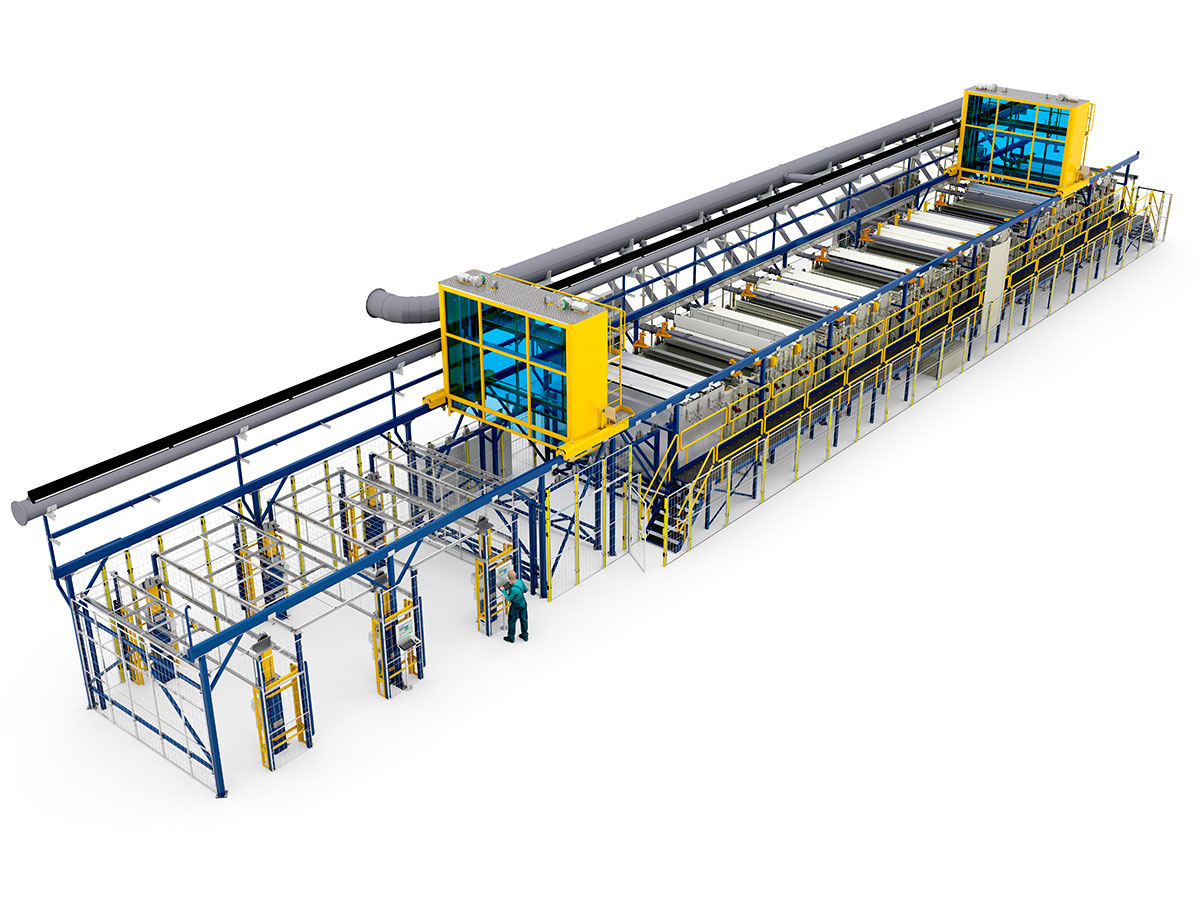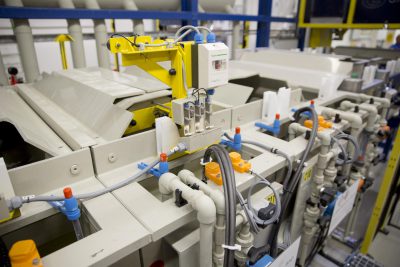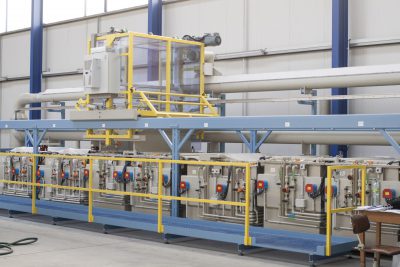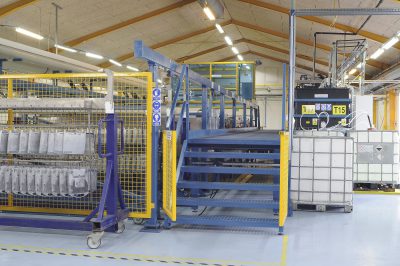Chemical Surface Treatment Plants
The design, manufacturing, supply, and installation of automated Chemical Surface Treatment lines to the most demanding industries.
John Cockerill has a long history in supplying chemical process plants used in the manufacture of aero engine parts and components, as well as in other industrial applications, including defense applications. John Cockerill chemical surface treatment plants include various types of plants without an electrolytic process. This kind of process is often called electroless plating.
We know what it takes to run a chemical surface treatment plant successfully year after year: the right composition of the plant, the correct materials to withstand strong chemicals, smart ventilation, process control, and other systems to ensure the occupational health of workers.
Typical chemical surface treatment processes
Electroless chemical surface treatment can be done either by adding metals to the surface (electroless plating) or changing surface properties with conversion coating, passivation, or black oxide process. Electroless plating creates an even layer of metal regardless of the shape of the surface. It improves the surface’s wear and corrosion resistance on the material. Electroless plating is suitable even to non-conductive surfaces.
Phosphating plants are divided into iron, zinc, or manganese phosphating plants. The phosphating process is often used in automobile and heavy vehicle manufacturing for vehicle bodies, gears, and camshafts. Iron and zinc phosphating equipment is also often used to create a good base for painting.
Zinc phosphating is often used in defence and it provides protection from rust and corrosion as well as an even base for paint to adhere to. Check out our Complete Solution for Artillery Shell Surface Treatment.
Conversion coating is a generic term referring to a coating produced by chemical or electrochemical treatment of a metallic surface. Conversion coating covers the component with a superficial layer containing a compound of the metal. Conversion coating plants are divided into categories such as chromate conversion coating plants and steel conversion coating plants. Chromate conversion coating plants are used to give aluminum components a good base for painting, corrosion resistance, and in many cases colors like yellow, olive, or black.
Black oxide conversion coating plants are typically used for ferrous alloys, but they can be used also for stainless steel, copper, and brass, for example. Black oxide offers a matte black appearance and corrosion resistance at reasonable costs. The black oxide coating process usually ends with a post-dip of either oil or wax to improve protection. Tools, bearings, and military firearms are typical examples of products with black oxide finishing.
The electroless nickel plating process creates an even nickel-alloy coating by chemical reduction on plastic or metal, but without electric current. Nickel phosphorus deposit contains typically 2–14% phosphorus. The higher the phosphorus content the better the corrosion resistance, but weaker in hardness. Chemical nickel offers excellent corrosion resistance to salt water, oxygen, etc.
Passivation is a coating of material so it becomes less readily corroded by the environment. In the chemical passivation process, an outer layer of shield material is applied as a micro coating created by a chemical reaction with the base material. Passivation is often done with citric or nitric acid.
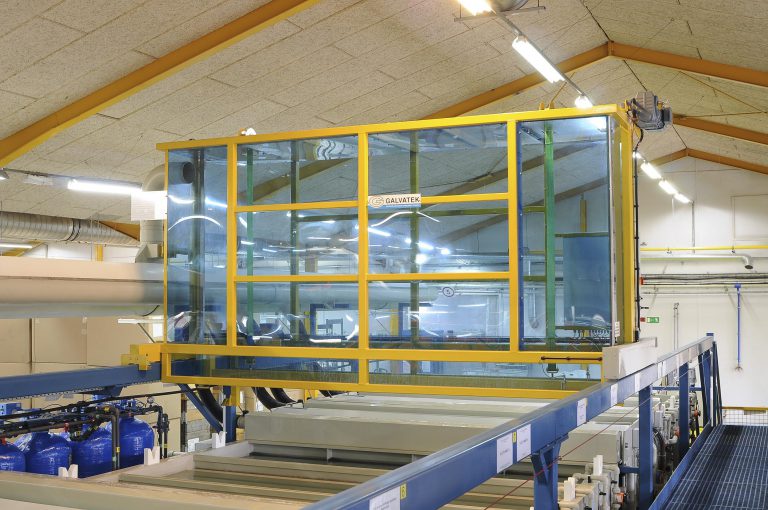
Typical products for chemical surface treatment
John Cockerill surface treatment plants can be tailored for various processes, meaning that they can serve various industries and processes regardless of different products. Chemical surface treatment plants are widely used in aviation, defense and aluminum industries. In the aviation industry phosphating and conversion coating are used for aerostructures, engine parts and other components. In the defense industry black oxidizing and passivation are exploited in manufacturing of arms and ammunition.
Typical chemical surface treatment plant
A typical John Cockerill chemical surface treatment plant has a high capacity, robust structure and is very cost-effective to operate. Depending on the process, cascade rinsing is made with 2 or 3 steps. Tank sizes are typically up to 2 meters in length, and the total single-line footprint is 15-30 meters by 4-5 meters. The line height is typically up to 5 meters. The racking alternatives for Galvatek’s chemical surface treatment plants include hanging from specially designed jigs or drums for small parts.
Key Solution: Process automation
Process automation keeps workers away from dangerous chemicals, keeps the quality consistent and enhances efficiency.
John Cockerill chemical surface treatment plants have an extremely high level of automation. The automated systems cover both process control and production control by constantly monitoring and adjusting chemical processes while also controlling material handling. As a result, payroll expenses can be reduced by up to 70 percent compared to manually operated plants. Automated plants are also much safer than manually operated plants.
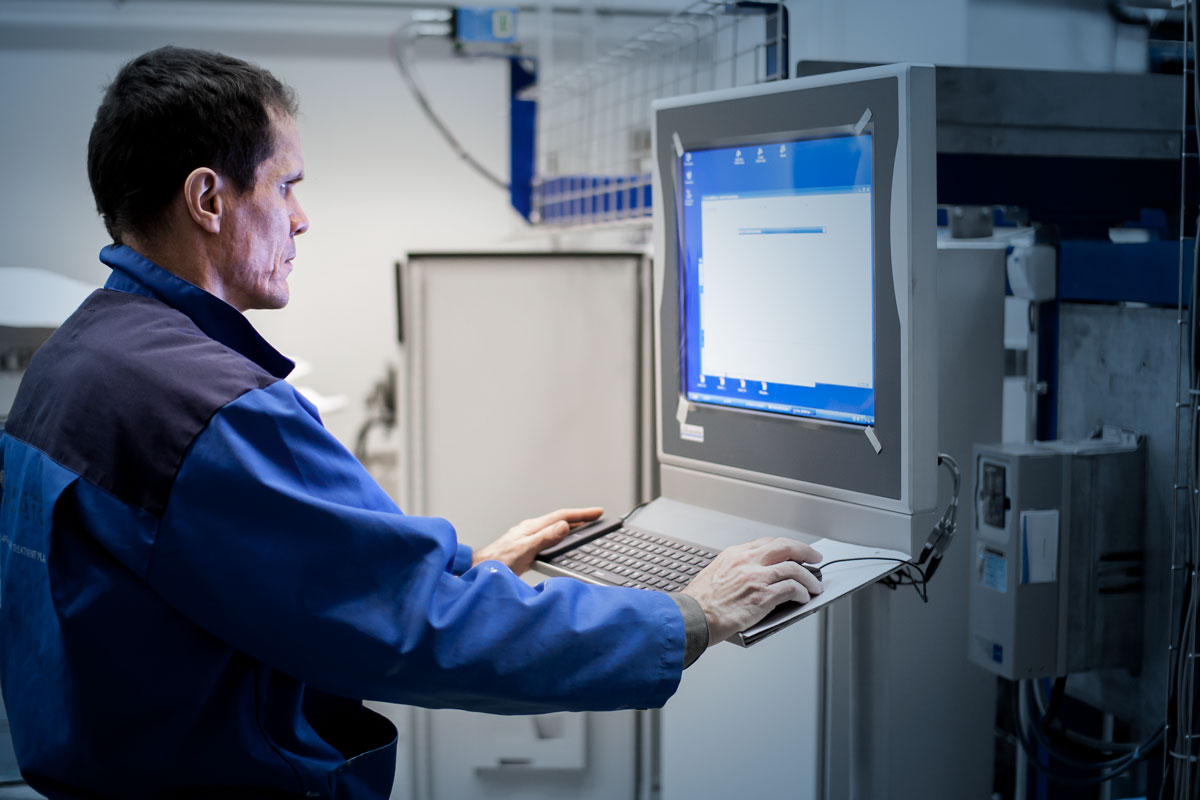
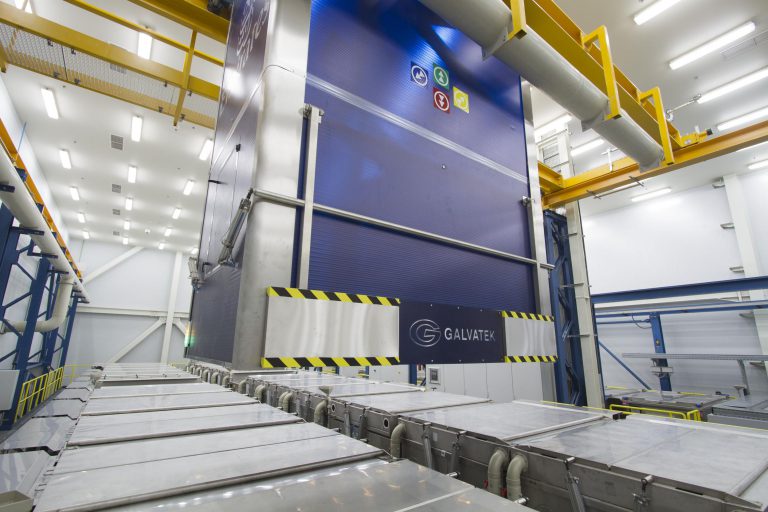
Key Solution: Compact line
John Cockerill´s chemical surface treatment plants are typically compact-sized plants. Compact lines are typically fast and easy to move and install, and they are designed to fit inside a sea container in just a few modules. They are delivered pre-assembled and tested at our manufacturer’s premises and brought to site ready to be installed, thereby minimizing costs arising from disruption to production.
